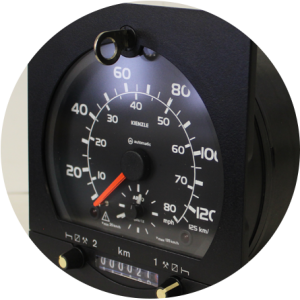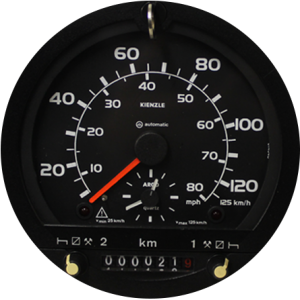You must use a tachograph if the vehicle you’re driving comes under EU or AETR rules, if your vehicle was manufactured before 1st May 2006 then you may use an analogue tachograph. For any vehicles manufactured after, your vehicle must be fitted with a digital tachograph.
An analogue tachograph allows a driver to record information about driving time, speed and distance. They also ensure that drivers and employers follow rules on drivers’ hours.
What does an analogue tachograph record?
An analogue chart enables a driver to record any working activity on a daily period. Recordings are made by a stylus cutting markings into a wax-coated chart. The separate styluses record speed, distance travelled and the driver’s activity. On the inner part of the chart, the driver is required to write his name, start and end destination, the date and start and end tachograph readings.
How to use an analogue tachograph
It is a driver’s responsibility to make sure that a tachograph clock is set to the correct local time before starting a journey. You must ensure that the tachograph chart is completed fully, and that the ‘mode’ switch (stylus recordings) is used properly.
Before driving a vehicle with an analogue tachograph, you must have filled in the tachograph chart (see Tachograph charts for how to fill one in correctly).
Analogue tachographs are used manually to allow a driver to record information. All entries must be made manually to maintain a back catalogue of daily working activity
Manual Entries
Manual entries must be made when a driver is unable to operate a tachograph, hasn’t been allocated to a vehicle or may be working away from their vehicle. Manual entries also may be required if a tachograph develops a fault. Drivers must also ensure to record where they have had breaks and when their duty begins again.
Records & Regulations
- Before using a tachograph a driver must check to ensure that it is all in working order as well as checking the time is set to the correct local time.
- Carry enough charts for the whole of the journey.
- Use more than one chart for a journey if needed.
- Ensure that the correct chart is being used for the specific tachograph in use.
- Do not use a chart to cover a period of more than 24 hours
- Make manual entries to record any activities away from the vehicle or if a device malfunctions
- Return all recorded charts to the employer within 42 days
- Provide charts to a police officer when asked for



You must be logged in to post a comment.